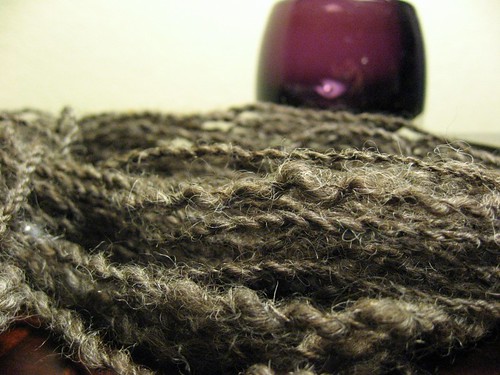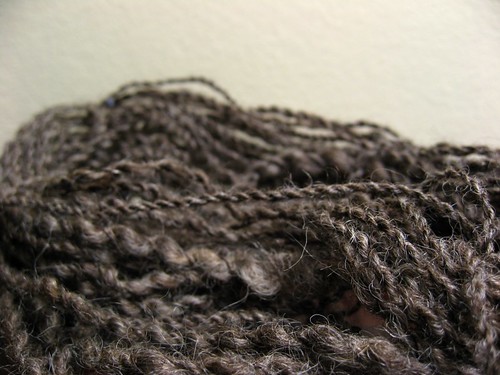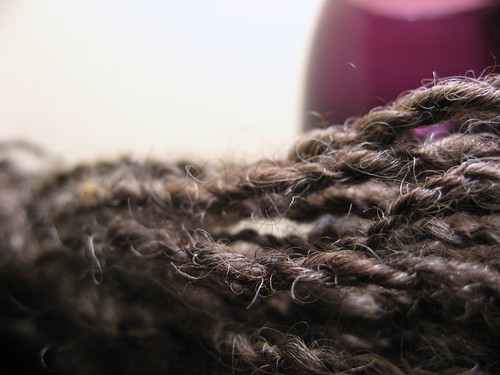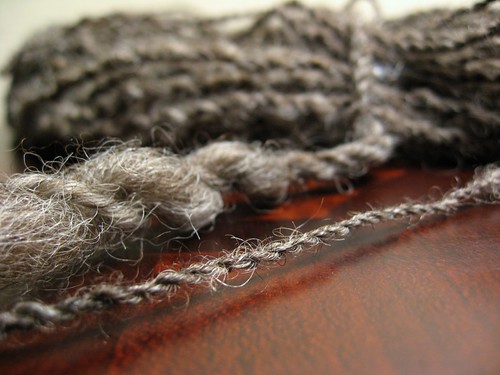Mr. DeMille, I'm Ready For My Closeup
Conclusions:
1. It's difficult taking photos of yarn in the dead of night (what's up with these colors?)
2. Yarn is hard to spin consistently, though it gets a bit easier with practice.
3. Spinning yarn is addictive.
I swear this is not turning into a spinning blog, but you have to admit it is pretty darn exciting! These photos are from my very first little mini skein of yarn. It consists of the yarn I spun during the first 2 days of spindle ownership and is approximately 7/8 oz, or nearly 1/2 of the roving sent along with the kit. I only ended up with about 25 yds because of my massively uneven initial spinning. The fiber is Coopworth, and supposedly very easy to learn on. In my (extremely limited) experience the length of the fibers seems extremely long (presumably making the drawing really easy when you are learning.)
I simply spun until the spindle was getting a little unwieldy for me to handle and then plied using the Andean plying method. Andean plying is genius - it allows you to wind the singles in such a way (on your hand no less - very low tech) that when you are done you can ply from both ends of a the single, thus avoiding having to wind the singles into separate balls. Truth be told I was kind of worried about the whole "winding singles into balls" bit. The only problem is that my singles were pretty variable in diameter, especially when comparing the very beginning of the single as compared to the very end, though I was getting a little better at keeping it even by the end. You can see from the photos above that some sections were very balanced, where the two singles were close in size, whereas others were definitely not. The singles were also generally very overspun, and even after plying there was a bit of kink in the yarn. I washed it and dried it flat though, so maybe if I had hung it to dry that would have helped.
This photo is my favorite one. It is the alpha and the omega. (What's more the alpha is joined with the omega because of the Andean plying!)
I'm already halfway through the rest of the fiber. Good thing the internet allows us to buy things in the middle of the night.
(Next question: so how do you spin hand painted roving so that it doesn't end up looking like mud?)
(PS I turned on the gas. Weak.)




2 Comments:
The bracelet works wonderfully for smaller amounts. You don't want to get 400 yards wrapped around there, tho, because as you've seen, you're kind of stuck then. That's when the winding into balls part comes in handy, and then bracelet ply the left-overs. Your first yarn does NOT look like a beginner yarn -- very well done!!
i love your first yarn! like dave said it does NOT look like beginner yarn.
that being said, the best way for handpaint roving to come out true to color is to ply it navajo style. if you know how to crochet a chain, it's not that hard. there's also some fantastic youtube tutorials out there. i recommend the one made by rexenne.
or you can just do a lovely single. :)
Post a Comment
<< Home